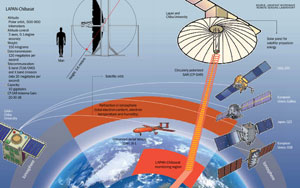An Old Dream Comes True
Tuesday, January 10, 2017
arsip tempo : 171416230529.

JOSAPHAT Tetuko Sri Sumantyo"s big dream began when he was only five years old. Josh, short for Josaphat, hoped someday to produce a radar satellite for Indonesia, a dream that went beyond the imagination of most children his age. He wanted to see Indonesia produce its own satellites instead of purchasing or renting from other countries.
It all began when his father, Michael Suman Juswaljati, an instructor at the Air Force Rapid Deployment Forcenow
...
Subscribe to continue reading.
We craft news with stories.
 For the benefits of subscribing to Digital Tempo, See More
For the benefits of subscribing to Digital Tempo, See More








